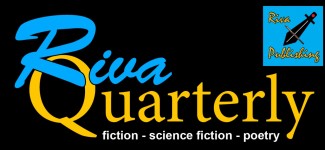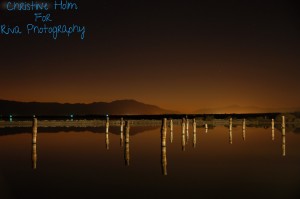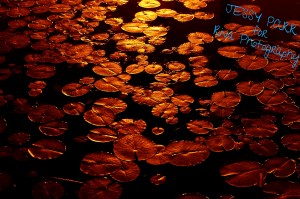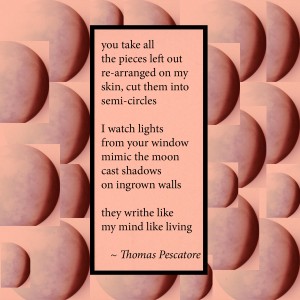Posted by Laura Layton |
Commentary
by Joel E. Dulin
The environment in which an author lives shapes the author’s imagination. Nature shaped Romantics’ imagination while they spent time in the countryside, away from the industrial landscape of early 19th century cities. In the 21st century, computer technology influences authors just as dramatically, as it is seemingly impossible to escape it, technology being in everything from shoes to ears stuffed with earbuds. Science has become part of every person’s environment, and that has affected science fiction.
There are two ways in which science influences science fiction authors: as backdrop and as a catalyst. As backdrop, science, though part of the story and even crucial to the plot (in the genre of science fiction, it inevitably is), is not the primary focus of the story. It is like how the streets of London provide the backdrop for Charles Dickens’s tales; science as backdrop is noticeable but periphery. It comes into play when other influences are integral to a story’s primary conflict. The many examples of dystopian novels and films that have been produced since Modernism ended illustrate this. The core themes of 1984 (1950), The Road (2006), and Hunger Games (2008), for example, do revolve around science. Rather, they focus on broader issues, like government control in 1984. The science is there, even if solely found in the backstory, as is the case in The Road, but the science is not center. There are bigger narratives going on. Such is also the case in the Hunger Games series. Science plays an important role: Film technology allows viewers to watch the hunger games take place; genetic technology allows Capitol scientists to create monsters; aeronautic technology allows Katniss, the protagonist, and others to escape a hunger game arena to District 13, where a group of rebels is living; and nuclear weapons threaten the existence of the human race, but none of these things drive the narrative. The books are a larger commentary on Capitalism and human nature (if you want to analyze them as commentary). The science in the story merely makes things interesting, and it provides the means for the plot to progress.
When science acts as backdrop, science fiction writers largely draw on readers’ common knowledge of science rather than introduce new advances or ideas or possibilities concerning it. They use science as something most readers are familiar with to express their stories; science is more a prop than a force.
As a catalyst, science serves as the antagonist or primary issue a story is addressing, or it may be the impetus for the story. Science has acted as a catalyst in stories before Romanticism even ended and authors had created the genre of science fiction. Frankenstein (1818), a precursor to the science fiction genre, is one story in which science acts as a catalyst. In the introduction to the book, Mary W. Shelly, the author, wrote about how she had read about some of Darwin’s experiments in which he “reanimated” dead flesh using electricity. Shelly mused that one day “the component parts of a creature might be manufactured, brought together, and endued with vital warmth.” [i] In her story, science made that very thing possible in the form of Frankenstein’s monster. A second example of science acting as a catalyst comes from Daniel Keyes’s Flowers for Algernon (1959), in which the protagonist, Charlie Gordon, undergoes a procedure that significantly increases his IQ. The procedure is at first successful, turning Charlie into a genius, but the effects are temporary, and in the end Charlie returns to his former intelligence. It is the procedure Charlie undergoes and its temporary effects that make the plot possible. Indeed, without it there would be no reason for the plot. And it is the procedure—the science—that drives the questions the narrative raises about human experimentation. Science is the primary issue the story addresses. It is the catalyst for the events. A third example of science as a catalyst is Arthur C. Clarke’s 2001: A Space Odyssey (1968). In this book, HAL 9000, a computer, acts as the antagonist, attempting to kill the crew of the spaceship HAL manages. HAL is the catalyst for the events, and therefore science acts as a catalyst.
In order to express their thoughts, science fiction authors draw upon the science they have interacted with, be it electricity, genetics, or the imagined science in other authors’ works. This science acts as a catalyst for new thoughts and stories: Monsters of reinvigorated flesh and janitors, like Charlie Gordon, who suddenly become geniuses. As science advances, science as a catalyst in science fiction will inevitably continue. Science naturally sparks our imaginations because it speaks to possibility. But we will see more science fiction that uses science as backdrop as science continues to further penetrate people’s lives. As people become more entangled with science, science imagery will be even easier for authors to draw upon and audiences to relate to. And that means more science fiction like Hunger Games rather than 2001: A Space Odyssey.
~
Joel Dulin is a freelance writer and editor. He grew up in Pennsylvania and Ohio, but now resides in Owensboro, Kentucky, with his wife, Sarah Beth. He enjoys outdoor activities such as biking and running, and in his spare time enjoys much the same as he does for work: everything related to words. Currently, his favorite author is Charles Dickens, although his favorite genre is science fiction.
[i] Shelley, Mary W. Frankenstein, or the Modern Prometheus. Page 9. Courage Books, 1990. Philadelphia. Print.







Science as Backdrop and Catalyst
Posted by Laura Layton | Commentaryby Joel E. Dulin
The environment in which an author lives shapes the author’s imagination. Nature shaped Romantics’ imagination while they spent time in the countryside, away from the industrial landscape of early 19th century cities. In the 21st century, computer technology influences authors just as dramatically, as it is seemingly impossible to escape it, technology being in everything from shoes to ears stuffed with earbuds. Science has become part of every person’s environment, and that has affected science fiction.
There are two ways in which science influences science fiction authors: as backdrop and as a catalyst. As backdrop, science, though part of the story and even crucial to the plot (in the genre of science fiction, it inevitably is), is not the primary focus of the story. It is like how the streets of London provide the backdrop for Charles Dickens’s tales; science as backdrop is noticeable but periphery. It comes into play when other influences are integral to a story’s primary conflict. The many examples of dystopian novels and films that have been produced since Modernism ended illustrate this. The core themes of 1984 (1950), The Road (2006), and Hunger Games (2008), for example, do revolve around science. Rather, they focus on broader issues, like government control in 1984. The science is there, even if solely found in the backstory, as is the case in The Road, but the science is not center. There are bigger narratives going on. Such is also the case in the Hunger Games series. Science plays an important role: Film technology allows viewers to watch the hunger games take place; genetic technology allows Capitol scientists to create monsters; aeronautic technology allows Katniss, the protagonist, and others to escape a hunger game arena to District 13, where a group of rebels is living; and nuclear weapons threaten the existence of the human race, but none of these things drive the narrative. The books are a larger commentary on Capitalism and human nature (if you want to analyze them as commentary). The science in the story merely makes things interesting, and it provides the means for the plot to progress.
When science acts as backdrop, science fiction writers largely draw on readers’ common knowledge of science rather than introduce new advances or ideas or possibilities concerning it. They use science as something most readers are familiar with to express their stories; science is more a prop than a force.
As a catalyst, science serves as the antagonist or primary issue a story is addressing, or it may be the impetus for the story. Science has acted as a catalyst in stories before Romanticism even ended and authors had created the genre of science fiction. Frankenstein (1818), a precursor to the science fiction genre, is one story in which science acts as a catalyst. In the introduction to the book, Mary W. Shelly, the author, wrote about how she had read about some of Darwin’s experiments in which he “reanimated” dead flesh using electricity. Shelly mused that one day “the component parts of a creature might be manufactured, brought together, and endued with vital warmth.” [i] In her story, science made that very thing possible in the form of Frankenstein’s monster. A second example of science acting as a catalyst comes from Daniel Keyes’s Flowers for Algernon (1959), in which the protagonist, Charlie Gordon, undergoes a procedure that significantly increases his IQ. The procedure is at first successful, turning Charlie into a genius, but the effects are temporary, and in the end Charlie returns to his former intelligence. It is the procedure Charlie undergoes and its temporary effects that make the plot possible. Indeed, without it there would be no reason for the plot. And it is the procedure—the science—that drives the questions the narrative raises about human experimentation. Science is the primary issue the story addresses. It is the catalyst for the events. A third example of science as a catalyst is Arthur C. Clarke’s 2001: A Space Odyssey (1968). In this book, HAL 9000, a computer, acts as the antagonist, attempting to kill the crew of the spaceship HAL manages. HAL is the catalyst for the events, and therefore science acts as a catalyst.
In order to express their thoughts, science fiction authors draw upon the science they have interacted with, be it electricity, genetics, or the imagined science in other authors’ works. This science acts as a catalyst for new thoughts and stories: Monsters of reinvigorated flesh and janitors, like Charlie Gordon, who suddenly become geniuses. As science advances, science as a catalyst in science fiction will inevitably continue. Science naturally sparks our imaginations because it speaks to possibility. But we will see more science fiction that uses science as backdrop as science continues to further penetrate people’s lives. As people become more entangled with science, science imagery will be even easier for authors to draw upon and audiences to relate to. And that means more science fiction like Hunger Games rather than 2001: A Space Odyssey.
~
Joel Dulin is a freelance writer and editor. He grew up in Pennsylvania and Ohio, but now resides in Owensboro, Kentucky, with his wife, Sarah Beth. He enjoys outdoor activities such as biking and running, and in his spare time enjoys much the same as he does for work: everything related to words. Currently, his favorite author is Charles Dickens, although his favorite genre is science fiction.
[i] Shelley, Mary W. Frankenstein, or the Modern Prometheus. Page 9. Courage Books, 1990. Philadelphia. Print.